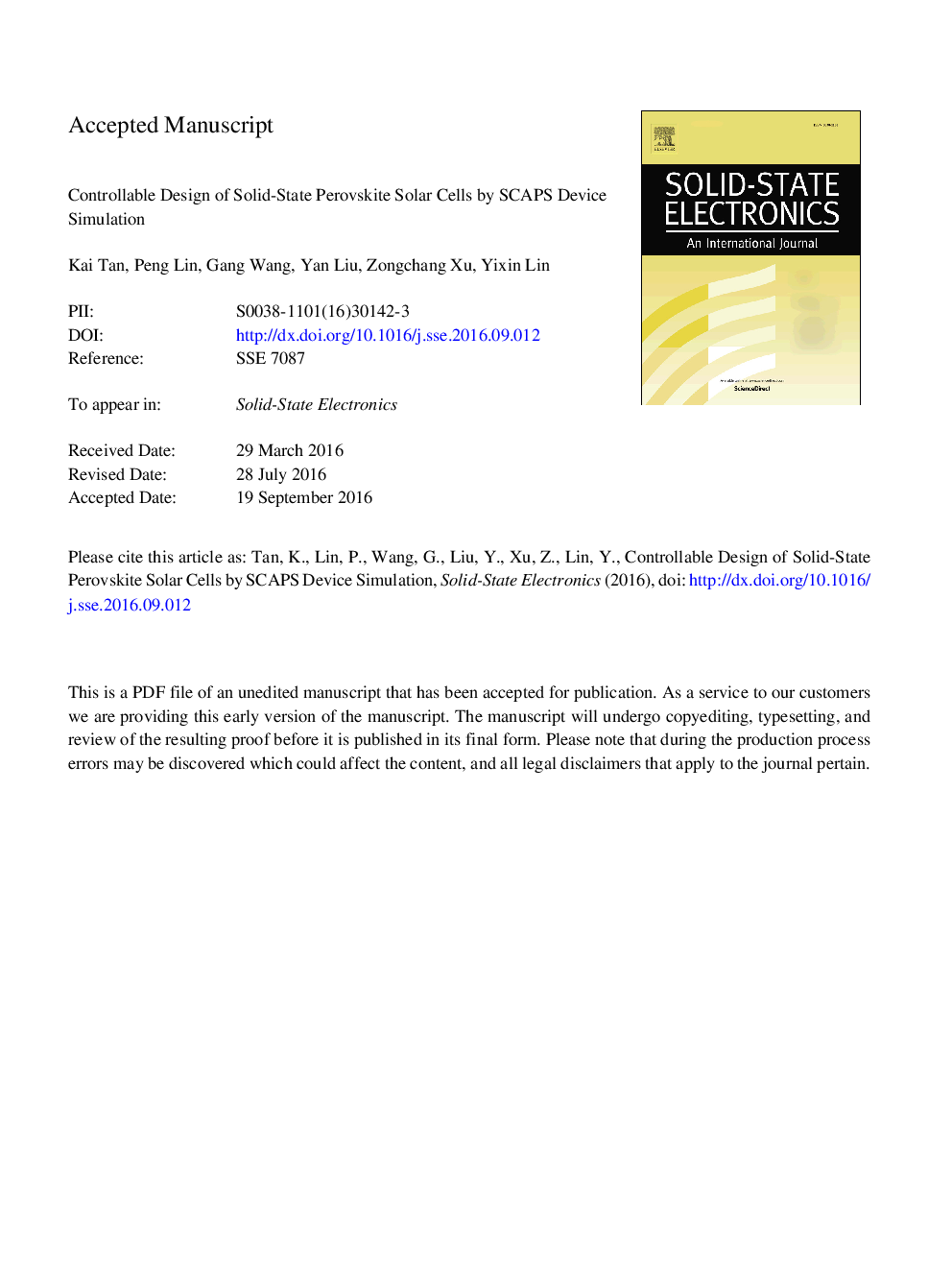| کد مقاله | کد نشریه | سال انتشار | مقاله انگلیسی | نسخه تمام متن |
|---|---|---|---|---|
| 5010413 | 1462207 | 2016 | 22 صفحه PDF | دانلود رایگان |
عنوان انگلیسی مقاله ISI
Controllable design of solid-state perovskite solar cells by SCAPS device simulation
دانلود مقاله + سفارش ترجمه
دانلود مقاله ISI انگلیسی
رایگان برای ایرانیان
کلمات کلیدی
موضوعات مرتبط
مهندسی و علوم پایه
سایر رشته های مهندسی
مهندسی برق و الکترونیک
پیش نمایش صفحه اول مقاله

چکیده انگلیسی
The highest power conversion efficiency (PCE) of solid-state perovskite solar cells (ssPSCs) has achieved 20.1% recently. There is reason to believe that ssPSCs is a strong competitor with silicon and CIGS solar cells in photovoltaic field. The deep understanding of operation mechanism of ssPSCs is essential and required to furtherly improve device performance. The configuration and excition type are similar to inorganic semiconductor solar cells. Therefore, Solar Cell Capacitance Simulator (SCAPS), a device simulator widely using in inorganic solar cells, was employed to controllably design ssPSCs. The validity of device simulation was verified by comparing with real devices from reported literatures. The influence of absorber thickness on device property was discussed, which indicate that it exists an optimal thickness range. Two hypothetical interface layers, TiO2/perovskite layer and perovskite/HTM layer, were introduced into the construction model to consider the effects of interfaces defect density on device performance. It revealed TiO2/perovskite has stronger impact than perovskite/HTM, because higher excess carrier density existing at TiO2/perovskite will cause more recombination rate. In addition, hole transport materials (HTM) parameters, hole mobility and acceptor density, were chosen to study the impact of HTM characteristics on PCE. The analysis illuminate that the design of HTM layer should balance hole mobility and acceptor density. Meanwhile, different HTM candidates were selected and replaced typical HTM layer. The discussion about the function of candidates on solar cells performance demonstrated that a thiophene group hole-transporting polymer (PTAA) and a copper-based conductor (CuI) both have relatively high PCE, which is due to their wide bandgap, high conductivity, and better chemical interaction with perovskite absorber.
ناشر
Database: Elsevier - ScienceDirect (ساینس دایرکت)
Journal: Solid-State Electronics - Volume 126, December 2016, Pages 75-80
Journal: Solid-State Electronics - Volume 126, December 2016, Pages 75-80
نویسندگان
Kai Tan, Peng Lin, Gang Wang, Yan Liu, Zongchang Xu, Yixin Lin,